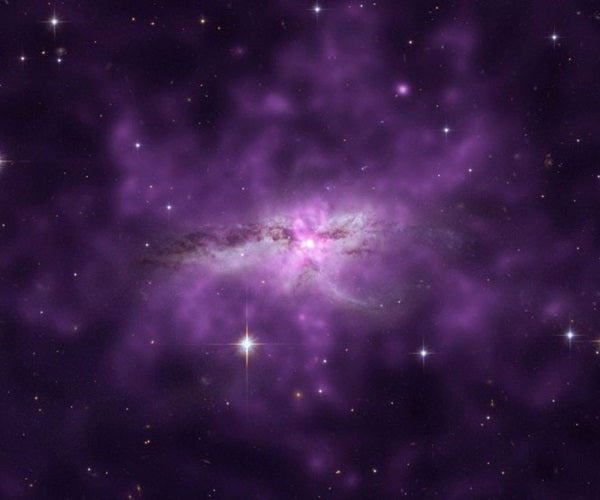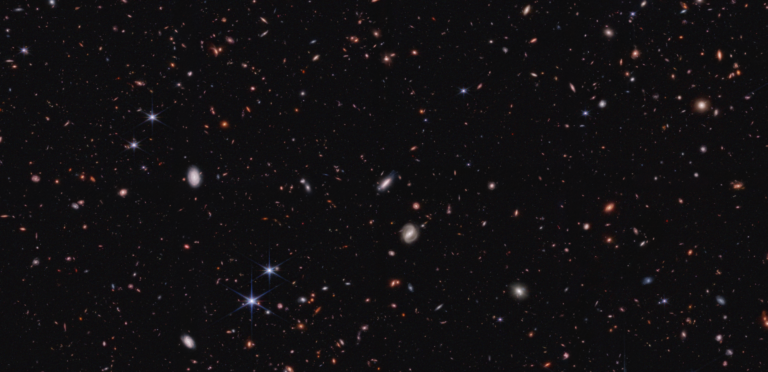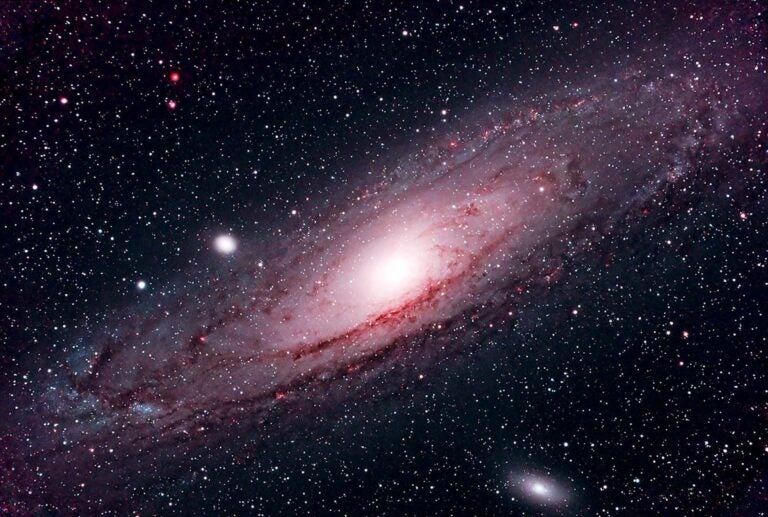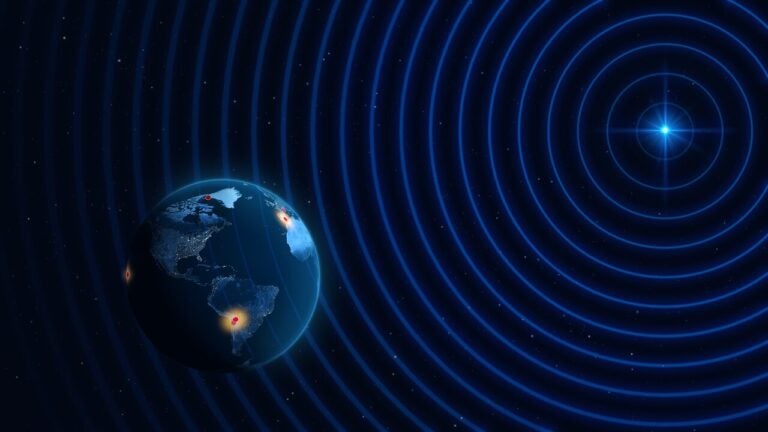This giant gas cloud, which scientists call a “halo,” is located in the system NGC 6240. Astronomers have long known that NGC 6240 is the site of the merger of two large spiral galaxies similar in size to our Milky Way. Each galaxy contains a supermassive black hole at its center. The black holes are spiraling toward one another and may eventually merge to form a larger black hole.
Another consequence of the collision between the galaxies is that the gas contained in each individual galaxy has been violently stirred up. This caused a baby boom of new stars that has lasted for at least 200 million years. During this burst of stellar birth, some of the most massive stars raced through their evolution and exploded relatively quickly as supernovae.
The scientists involved with this study argue that this rush of supernova explosions dispersed relatively high amounts of important elements such as oxygen, neon, magnesium, and silicon into the hot gas of the newly combined galaxies. According to the researchers, the data suggest that this enriched gas has slowly expanded into and mixed with cooler gas that was already there.
During the extended baby boom, shorter bursts of star formation have occurred. For example, the most recent burst of star formation lasted for about 5 million years and occurred about 20 million years ago. However, the scientists do not think that the hot gas was produced just by this shorter burst.
What does the future hold for observations of NGC 6240? Most likely the two spiral galaxies will form one young elliptical galaxy over the course of millions of years. It is unclear, however, how much of the hot gas can be retained by this newly formed galaxy, rather than lost to surrounding space. Regardless, the collision offers the opportunity to witness a relatively nearby version of an event that was common in the early universe when galaxies were much closer together and merged more often.
In this new composite image of NGC 6240, the X-rays from Chandra that reveal the hot gas cloud are colored purple. These data have been combined with optical data from the Hubble Space Telescope, which shows long tidal tails from the merging galaxies, extending to the right and bottom of the image.










